Troubleshooting Electrical Problems in Water Heaters

Electrical issues in water heaters can disrupt your hot water supply and even pose safety risks if left unresolved. This guide covers key steps to identify and fix electrical problems in water heaters, ensuring efficient and safe operation.
Troubleshooting Electrical Problems in Water Heaters
From faulty thermostats to damaged heating elements, electrical issues in water heaters can quickly turn into frustrating cold showers. Understanding the basics of water heater components can help you diagnose and, in some cases, fix these problems. Here’s a step-by-step guide for troubleshooting electrical issues in your water heater.
Your fridge is a kitchen superstar as it keeps all your food fresh and drinks cold.
But does the fridge feel warm when you open it?
Is there water all over the floor?
Fridge issues are the worst!
Common Symptoms of Electrical Issues in Water Heaters
Look out for these signs that suggest an electrical problem with your water heater:
- No hot water: The heater isn’t producing any hot water, often indicating a tripped breaker or faulty thermostat.
- Inconsistent temperature: Water temperature varies unexpectedly, which could mean a thermostat or heating element issue.
- Slow heating: If it takes longer to heat water, it might be due to a damaged heating element.
- Unusual noises: Buzzing or humming sounds can point to a faulty heating element or loose wiring.
Safety Precautions Before Troubleshooting
Water heater repairs involve electrical components, so prioritize safety with these steps:
- Power off: Turn off the power supply to the water heater at the circuit breaker to prevent electrical shock.
- Test for current: Use a voltage tester to confirm there’s no electricity flowing to the water heater.
- Gather tools: Basic tools, like a multimeter and screwdriver, can help with diagnosing and fixing electrical problems.
Identifying and Fixing Common Electrical Problems
Check the Circuit Breaker
Steps:
- Locate the circuit breaker panel and find the switch for your water heater.
- If the breaker is tripped, reset it. If it trips again, there may be a larger electrical issue, requiring a technician.
Inspect the Thermostats
Most electric water heaters have two thermostats: upper and lower. A malfunctioning thermostat can prevent the heater from reaching the right temperature.
Steps:
- Access the thermostat: Remove the access panels on the heater and locate the thermostats.
- Test with a multimeter: Set the multimeter to measure resistance. Each thermostat should read zero ohms if it’s working correctly.
- Replace if faulty: If either thermostat shows no continuity, it’s likely broken and should be replaced.
Test the Heating Elements
Heating elements are responsible for warming the water. If they’re worn out or damaged, the heater will struggle to maintain hot water.
Steps:
- Locate the heating elements: You’ll find one at the top and another at the bottom of the tank.
- Disconnect power: Detach the wires connected to each element.
- Test with a multimeter: Set the multimeter to resistance mode. A healthy element should show between 10 and 16 ohms of resistance.
- Replace if needed: If an element shows no continuity or a high reading, it needs replacement.
Inspect Wiring and Connections
Loose or corroded connections can interrupt power flow and cause heating issues.
Steps:
- Check for loose wires: Look for any loose or corroded connections, especially around the thermostats and heating elements.
- Tighten connections: Secure any loose wires and ensure they’re firmly attached.
- Replace damaged wiring: If the wiring appears frayed or worn, consider replacing it to avoid future issues.
Resetting the Water Heater
If all components appear to be in good shape, try resetting the water heater:
- Press the reset button located on the upper thermostat. This can help if there’s been a temporary glitch with the heater’s controls.
Preventing Future Electrical Issues
- Regular inspections: Schedule routine checks for wiring, thermostats, and heating elements to catch issues early.
- Flush the tank: Periodically flush out sediment, which can cause elements to overheat and fail.
- Professional servicing: Annual maintenance from a technician can help extend the life of your heater and avoid unexpected breakdowns.
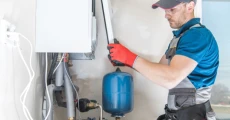
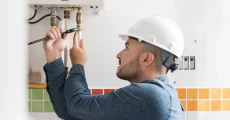
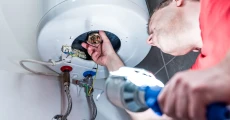
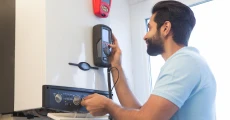
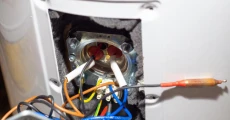
Call the Experts When You Need a Hand
Troubleshooting electrical issues in water heaters requires caution and accuracy. If you’re unsure or need help, our team at CLT Appliance Repair is ready to assist. We specialize in diagnosing and fixing electrical problems safely, so you can get back to enjoying consistent hot water.
Don’t let electrical problems keep you in the cold—reach out to us today for reliable, expert water heater repair charlotte nc!
FAQs
A lack of hot water often points to a tripped breaker, faulty thermostat, or broken heating element.
Yes, most water heaters have a reset button on the thermostat. Press it once to reset. If it trips again, further inspection is needed.
Heating elements can last 6–10 years, but it’s best to check them annually, especially in areas with hard water.
Basic checks are usually safe if the power is off, but if you’re unfamiliar with electrical repairs, calling a technician is recommended.
Persistent issues may require thermostat or element replacements. Contact a professional for a thorough inspection.
Don't let a malfunctioning Water Heater disrupt your daily life. Contact CLT Appliance Repair today at 704-606-9043 to schedule your Water Heater repair service.
We'll have your Water Heater back to optimal performance in no time!
Dryer Repair Charlotte NC | Washing Machine Repair Charlotte NC | Refrigerator Repair Charlotte NC | Microwave Oven Repair Charlotte NC | Freezer Repair Charlotte NC | Dryer Vent Cleaning Charlotte NC | Dishwasher Repair Charlotte NC | Cooktop Repair Charlotte NC | Stove Repair Charlotte NC | Charlotte Ice Maker Repair | Garbage Disposal Repair Charlotte NC | Plumbing Repair Charlotte NC | Water Heater Repair Charlotte NC
Admiral Appliance Repair | Amana Appliance Repair | Bosch Appliance Repair | Electrolux Appliance Repair | Frigidaire Appliance Repair | General Electric Appliance Repair | Haier Appliance Repair | Hotpoint Appliance Repair | Jenn-Air Appliance Repair | Kenmore Appliance Repair | KitchenAid Appliance Repair | LG Appliance Repair | Magic Chef Appliance Repair | MayTag Appliance Repair | Roper Appliance Repair | Samsung Appliance Repair | Speed Queen Appliance Repair | Whirlpool Appliance Repair | Dacor Appliance Repair | Viking Appliance Repair | Thermador Appliance Repair | Sub-Zero Appliance Repair | Wolf Appliance Repair | Monogram Appliance Repair | Bertazonni Appliance Repair | BlueStar Appliance Repair | Thor Appliance Repair | Miele Appliance Repair | Cafe Appliance Repair | GE Appliance Repair
Appliance Repair Indian Land SC | Appliance Repair Indian Trail NC | Appliance Repair Pineville NC | Appliance Repair Rock Hill SC | Appliance Repair Belmont NC | Appliance Repair Matthews NC | Appliance Repair Lancaster SC | Appliance Repair Cornelius NC | Appliance Repair Fort Mill SC | Appliance Repair Concord NC | Appliance Repair Denver NC | Appliance Repair Monroe NC | Appliance Repair Mooresville NC | Appliance Repair Harrisburg NC | Appliance Repair Lake Wylie SC | Appliance Repair Huntersville NC | Appliance Repair Kannapolis NC | Appliance Repair Mint Hill NC | Appliance Repair Waxhaw NC | Appliance Repair Troutman NC | Appliance Repair Davidson NC | Appliance Repair Gastonia NC | Appliance Repair Charlotte NC

